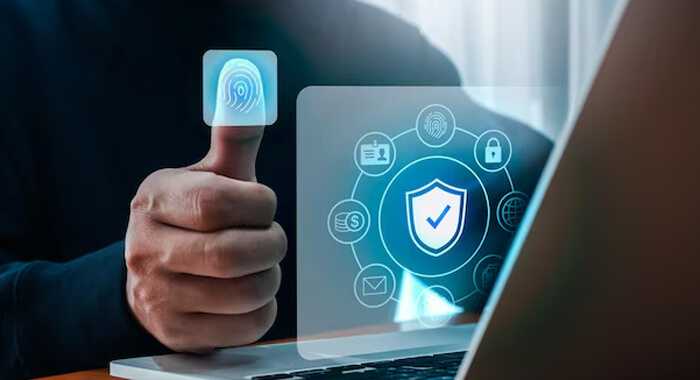In the ever changing digital world, mobile applications are becoming an essential aspect of our everyday existence. We use applications for a wide range of tasks, from social networking alongside entertainment to banking as well as shopping. The need to ensure the security of these digital instruments develops along with our reliance on them. This article examines five important factors that should be taken into account when considering app security for developers, companies, and consumers.
1. Data Encryption and Protection
Data encryption as well as protection have to be the primary goals of any app security plan. Encryption is the process of making information that only a selected few should view to be only viewable by them. This is simply about the security of the user information as it concerns mobility apps, whether in transfer, while in a network or when stored in the device or server. Encryption plus measures that are strong make sure that data is safe in addition to being unreadable even if it has been intercepted or in the event the device is hacked.
It is impossible to overestimate the significance of data encryption, particularly for apps that manage sensitive data like financial, health, or personal information. This data is susceptible to being intercepted alongside misused by bad actors if it is not properly encrypted. Furthermore, the use of encryption to safeguard user data is required by a number of regulatory standards as well as compliance requirements. App developers may secure their users and maintain compliance with industry and legal requirements by giving encryption first priority.
It’s important to take into account both the management of encryption keys as well as the strength of the encryption algorithms while encrypting data. It is necessary to employ robust, industry-standard encryption algorithms and to produce, store, and maintain encryption keys in a safe manner. To keep ahead of emerging risks, encryption techniques must also be updated on a regular basis. Additionally, to improve the overall security of data transmission within the app, developers should think about incorporating features like perfect forward secrecy and secure key exchange protocols.
2. Secure Authentication and Authorization
The essential elements of app security that regulate access to user accounts and private content are permission and authentication. Users’ identities are confirmed by authentication, which usually uses multi-factor authentication (MFA), and biometrics, as well as passwords. However, authorization controls the actions that authenticated users are permitted to take within the application. When combined, these procedures provide an essential barrier against unwanted access and possible data breaches.
It’s crucial to utilize authentication methods that go beyond straightforward username and password pairings. Although passwords are still widely used for authentication, they are frequently subject to many types of assaults, including credential stuffing and brute force attacks. Developers should think about adding more authentication levels to improve security. This might use hardware tokens, one-time passwords given by email or SMS, or biometric verification (such as fingerprint or face recognition). Combining two or more of these techniques to create multi-factor authentication offers a far greater degree of security and is quickly taking the place of the industry standard for critical applications.
The least privilege concept must to be taken into consideration while designing authorization procedures. This entails giving users just the minimal amount of access required to do their assigned responsibilities. Users’ permissions may be efficiently managed by implementing role-based access control (RBAC), which guarantees that users can only access the features and data that are pertinent to their roles. Maintaining the integrity of the authorization system also requires routine audits of user access rights and permissions.

3. Secure Network Communication
Nowadays, since mobile devices are always linked to several networks, it is critical to secure the routes of communication between the application and outside servers. Attackers can use insecure network connections to execute man-in-the-middle attacks, intercept data, or insert malicious code. Consequently, one of the most important aspects of app security is putting secure network protocols and procedures into effect.
The use of SSL or Secure socket layer to encrypt all the communications in the network is the core of secure network transmission. Since HTTPS encrypts the information that is exchanged between the application and the servers, it is almost impossible for the hackers to analyze the information that is being exchanged or even tamper with it. To lower the possibility of accepting bogus certificates, certificate pinning entails hardcoding the specifics of reliable certificates into the application.
4. Secure Data Storage
Securing data on the device itself is just as vital as safeguarding it while it’s in transit. This is a problem when it comes to data storage because mobile devices can be lost and stolen and accessed by unauthorized persons. There is also the issue of app security that the developers need to consider while app protection should also be well implemented to ensure that device information and other private data is not easily accessed by other people.
The adoption of suitable encryption for locally stored data is a crucial factor in safe data storage. Databases, files, and any cached data that the app might save on the device are all encrypted as part of this process. Strong, industry-standard encryption techniques should be used by developers, and they should make sure that encryption keys are handled securely. For safe data storage, it’s also crucial to take into account the unique security features and APIs offered by the mobile operating system, such as Android’s Keystore system or iOS’s Keychain.
5. Regular Security Updates and Patch Management
The environment of digital threats is ever-changing, with new attack paths and vulnerabilities appearing on a regular basis. Thus, putting in place a reliable mechanism for frequent security upgrades and patch management is essential for app security. This continuous procedure makes sure that the app is always safe from the most recent attacks and that any vulnerabilities are fixed right away.
Creating a methodical approach to security upgrades requires a number of essential components. Initially, a procedure for routinely tracking and evaluating fresh security risks and weaknesses that can impact the application has to be established. This includes keeping up with security bulletins, engaging with pertinent development forums, and maybe using automated vulnerability screening tools. A fast response mechanism for creating and distributing fixes has to be in place whenever vulnerabilities are found, whether they are in the application itself or in the libraries and components it utilizes.
Conclusion
In today’s digital world, it is imperative to take into account these five essential appsec factors: data encryption and protection, safe network connection, secure authentication and authorization, secure data storage, and frequent security upgrades. Still, adequate app security is more than just putting these safeguards in place. Throughout the app’s lifespan, a comprehensive, security-first strategy must be taken, and security requirements and user experience must be carefully balanced.



